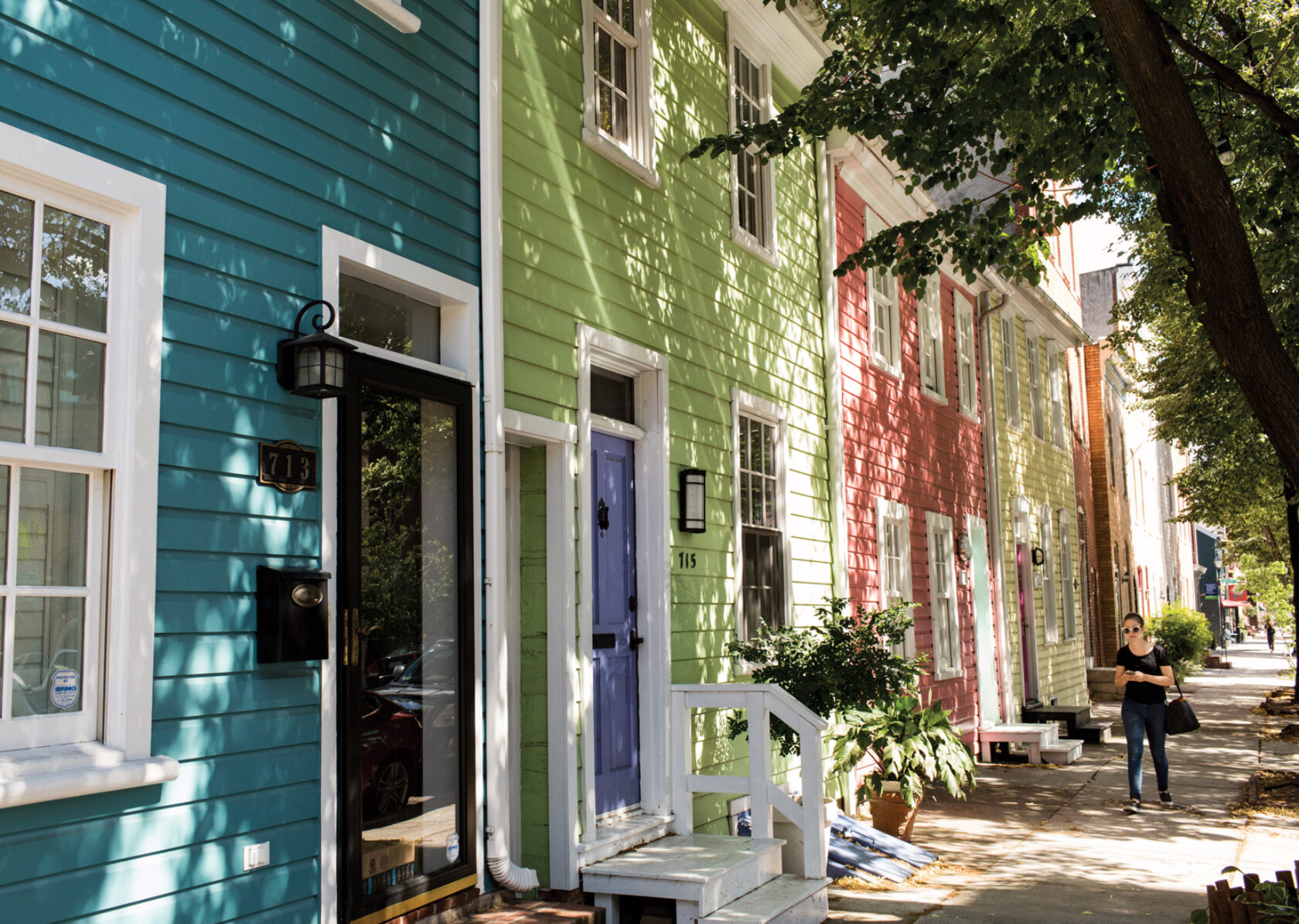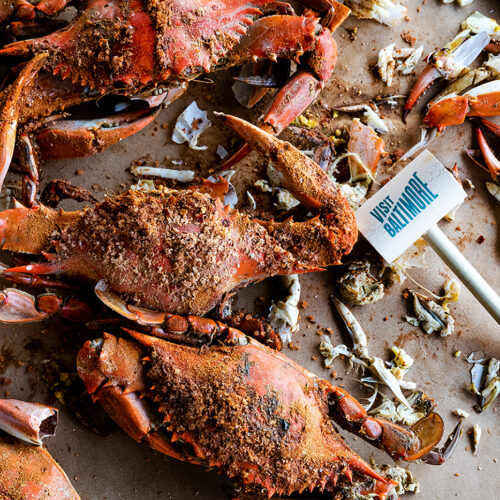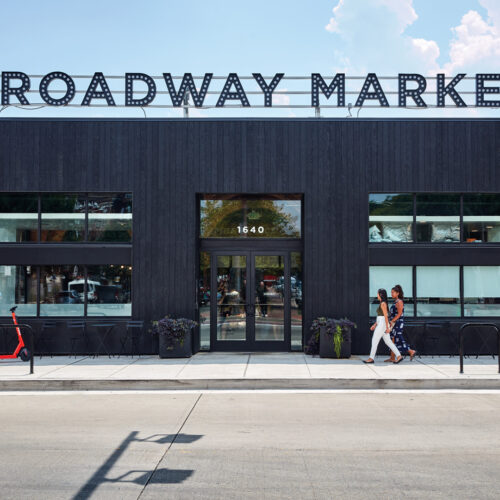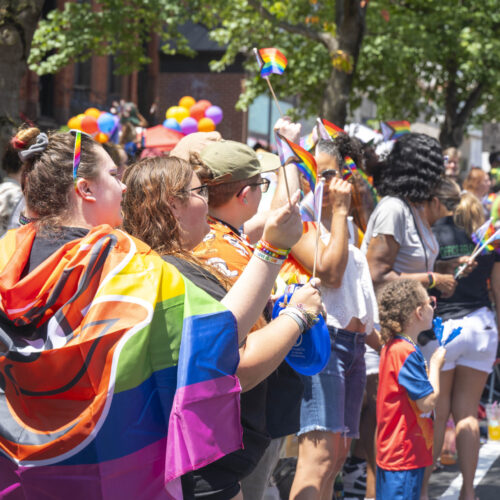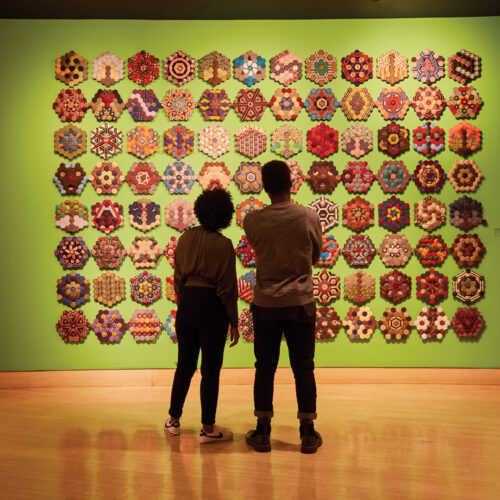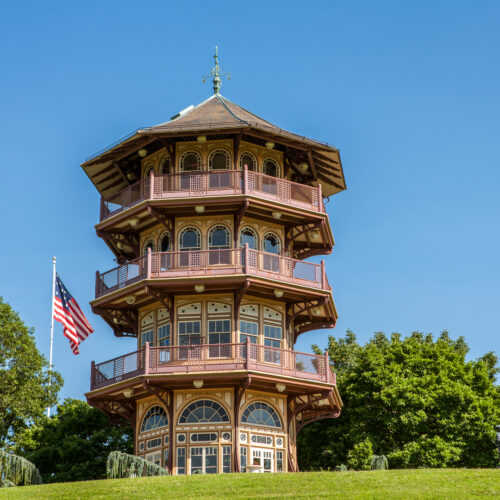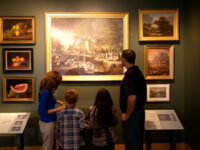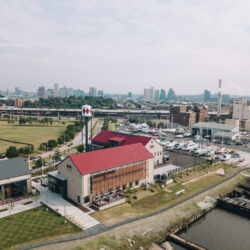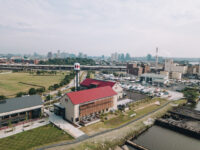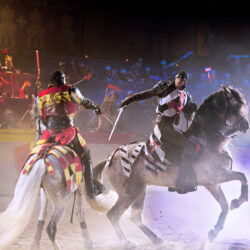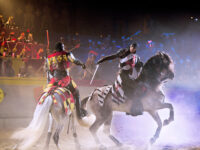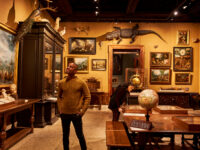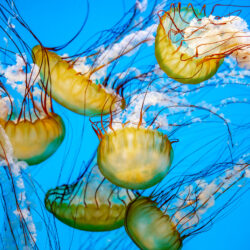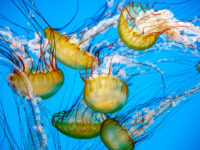Baltimore Traditions Worth Celebrating
Want to know what Baltimore is known for? Check out these beloved traditions and must-do experiences.
As a port city city filled with innovators, artists and entrepreneurs, Baltimore is always growing and evolving, and there’s always something new to explore here. But as much as we love to switch things up and subvert expectations, we know that some things, like the following only-in-Baltimore traditions, are better left unchanged. From food items to slogans to must-have experiences, the items on this list just scream “Baltimore.”
Crabs
No trip to Baltimore is complete without sampling crab – whether it’s a steamed crab feast, a crab cake, crab dip or crab meat topped on anything from pasta to hot dogs. Native to the Chesapeake Bay, blue crabs have been the inspiration for many a Baltimore dish, but that’s not all we’re known for. We have plenty of fresh seafood, plus other only-in-Baltimore bites you simply must try.

A traditional crab feast features steamed blue crab smothered in butter and Old Bay plus corn and ice cold beer on the side! Photograph by Justin Tsucalas.
Public Markets
Long before cafeteria-style dining became a national culinary trend, Baltimore’s public market system was dishing up fresh seafood, sweet treats, grab-and-go lunches and grocery items—and it’s still going strong. Historic markets in Baltimore include downtown’s Lexington Market (established in 1782), the oldest continually running market in America, Broadway Market in Fell’s Point (1786), one of the first public markets in Baltimore, and Federal Hill’s Cross Street Market (1846). Here, you’ll find fares from beloved Baltimore establishments like Faidley’s Seafood, Berger’s Bakery, Connie’s Chicken and Waffles, Fenwick’s Choice Meats and Taharka Bros. Ice Cream.
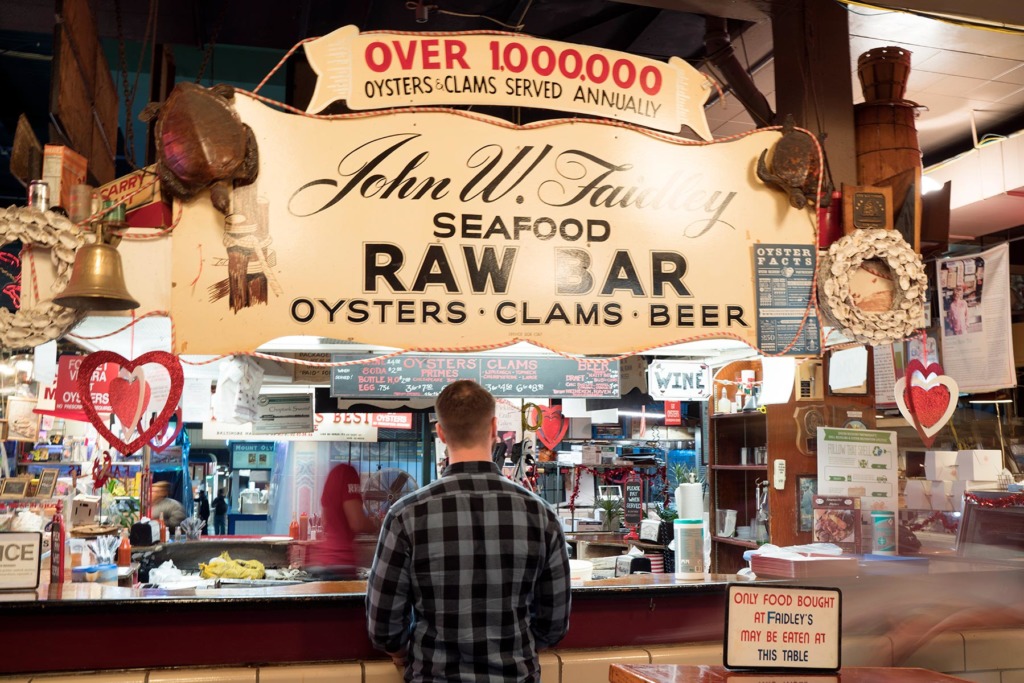
Lexington Market is home to beloved Baltimore eateries Faidley’s Seafood and Bergrer’s Bakery. Photograph by John Lehr.
There’s also Remington’s R. House, which often hosts community events like trivia nights and live music, and Avenue Market in the Pennsylvania Avenue Black Arts & Entertainment District. No matter where you go, you’re sure to enjoy a tasty only-in-Baltimore meal courtesy of our impressive local chefs and family businesses.
Row Homes
The majority of Baltimoreans live in row homes, and the city itself has more than nearly any other U.S. city. These narrow dwellings were constructed in a variety of styles, but most feature front “stoops” instead of porches. On warm evenings, it’s not uncommon for neighbors to gather on the steps to gossip while the kids play out front. The steps were typically made from marble thanks to the abundant supply from the quarries in Cockeysville, a town 17 miles north of the city. The same marble was used to help build many structures in Washington, D.C., including the Washington Monument. At the American Visionary Art Museum, there is a recreation of one of these classic Charm City stoops, complete with a painted screen and formstone facade commonly found here.
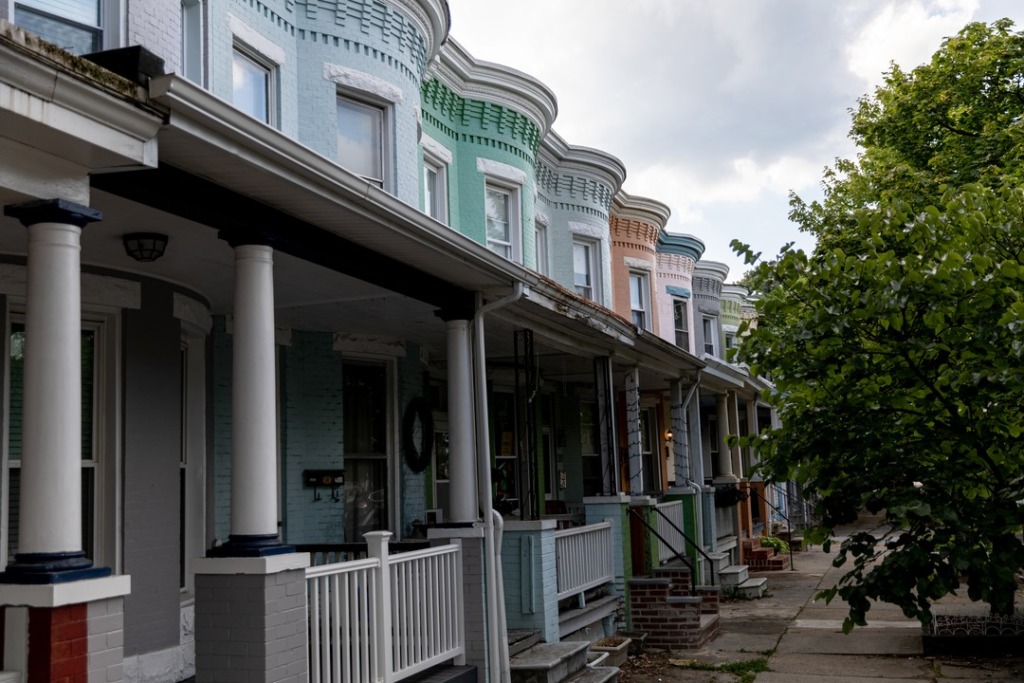
Remington, an artsy neighborhood bordering Johns Hopkins and the Baltimore Museum of Art, houses several colorful row homes.
Maker Community
Baltimore is a haven for artists and hardworking entrepreneurs. This enterprising spirit courses through every aspect of the city, giving rise to small business ownership, neighborhood activism, volunteer work and other do-it-yourself projects. Visit Baltimore’s small business owners and creators to pick up a one-of-a-kind souvenir, or try making your own during a workshop. Examples of hands-on experiences around the city include terrarium-making, glassblowing, bookbinding, candle-pouring and more.

Make your own papercut creation at a workshop led by Annie Howe!
Nicknames
 You don’t need to know anyone in Baltimore to quickly feel at home. Baltimoreans are known for their charm and warm welcome to strangers; eye contact, holding doors and saying hello to passersby is part of the culture, so it’s no wonder our most common nickname is Charm City! The nickname was penned by a city advertising agency in the 1970s, and it’s been popular among locals and visitors ever since. Other nicknames given to Baltimore throughout the years include Monument City, employed by John Quincy Adams in an 1827 speech regarding our Washington Monument, Wet City (due to us being openly opposed to Prohibition) and “The City that Reads,” a campaign slogan created by former Mayor Kurt L. Schmoke to emphasize child literacy that has since been used to illuminate Baltimore’s rich literary history.
You don’t need to know anyone in Baltimore to quickly feel at home. Baltimoreans are known for their charm and warm welcome to strangers; eye contact, holding doors and saying hello to passersby is part of the culture, so it’s no wonder our most common nickname is Charm City! The nickname was penned by a city advertising agency in the 1970s, and it’s been popular among locals and visitors ever since. Other nicknames given to Baltimore throughout the years include Monument City, employed by John Quincy Adams in an 1827 speech regarding our Washington Monument, Wet City (due to us being openly opposed to Prohibition) and “The City that Reads,” a campaign slogan created by former Mayor Kurt L. Schmoke to emphasize child literacy that has since been used to illuminate Baltimore’s rich literary history.
Iconic State Flag
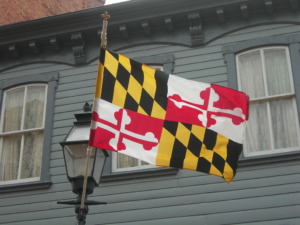
Keep an eye out for these iconic red, white, yellow and gold flags hanging from row homes in Baltimore!
It’s difficult to traverse Maryland without coming across our infamous state flag, which features two colorful alternating patterns. The design is taken from the coat of arms designed by the first Lord Baltimore, George Calvert. The yellow-and-black diagonal diamond pattern represents Calvert’s paternal side (and makes up the City of Baltimore’s official flag!), and the red-and-white crosses pay respect to his mother’s side. The General Assembly approved the design for the state flag in 1904, and it has since remained a point of local and national pride. Baltimoreans love it so much, in fact, that we put it on everything—clothing, bumper stickers, shot glasses, socks, keychains and more. You’re also sure to spot the flag on stoops and in windows as you wander around Charm City, so keep your eyes peeled!
“Hon”
In certain areas of the city, “hon”—short for “honey”—is said so often it’s practically a punctuation mark. Historically, it’s the nickname for the dialect that originated among the blue-collar residents of Baltimore. Today it’s celebrated each year at HonFest, a neighborhood festival in Hampden where beehive hairdos, cat-eyed glasses and feather boas are part of the dress code.

Expect to see lots of beehive hairdos and bright prints at HonFest, an annual summer festival that celebrates Baltimore’s old school hon culture. Think John Waters’s Hairspray!
The Water Taxi
At nearly 50 years old, the Baltimore Water Taxi is the oldest public water-based service in the United States. It provides scenic 360-degree views of the Chesapeake Bay while transporting passengers to and from several waterfront neighborhoods and attractions including Federal Hill, Canton, Fell’s Point, Locust Point and Fort McHenry. We recommend purchasing an all-day ticket for $20, so you can board the Water Taxi as many times you please with ease! See their website for route information and hours of operation.

Take in the sights and sounds of the Inner Harbor from the Water Taxi. Photograph by Jason Varney.
Arabbers
An arabber is a street vendor who sells fruits and vegetables from a horse-drawn cart. They often rely on hollers—short, lyrical calls—to attract the attention of their customers. They were once a common sight in many East Coast cities after the Civil War, but today, the practice only prevails in Baltimore, where fewer than a dozen still roam the streets.
Salt Boxes
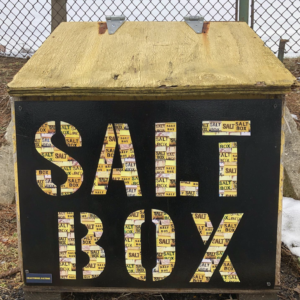
Robert Atkinson, who runs @baltimore.saltbox on Instagram, made this salt box using images he’s taken around Baltimore.
What was once a purely practical snow day protective measure has become a public art project in recent years, thanks to the ingenuity and curiosity of the local creative community. The bright yellow salt boxes, which are self-serve and typically found on street corners and sidewalks, have existed in Baltimore for decades, but they received renewed attention when artist Juliet Ames employed her jewelry techniques to decorate a Hampden salt box with repurposed china in 2020. Ames’s rapidly inspired a movement, and now there are over 100 decorated salt boxes around Baltimore. Designs range from portraits of iconic Charm City figures and institutions like Edgar Allan Poe, the Orioles and Old Bay seasoning to riffs on memes and salt-related puns. Want to embark on a salt box scavenger hunt the next time you’re in Baltimore? The Instagram account @baltimore.saltbox documents the city’s collection of salt boxes, highlights artists and tells you where to find them.
